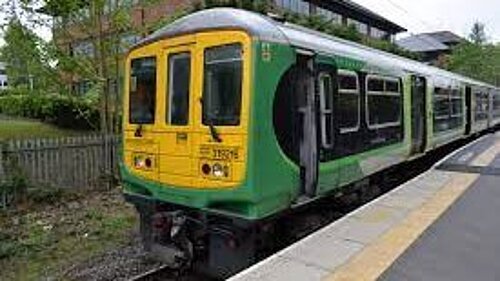“Bold decisions” must be taken on future of Abbey Line, says St Albans Lib Dem council group

The motion, proposed yesterday by Councillor Vlad Jirasek and seconded by Councillor Nuala Webb, says that the council “expresses its dismay at the refusal of the government to progress the long-overdue upgrade of the Abbey Line, and is concerned about the criticism made by the Department for Transport (DfT) of the proposals from Herts County Council about the lack of evidence provided.”
This follows last month’s decision by the DfT to reject an application for government funding to create a passing loop in the Abbey Line – which would increase the number of trains per hour.
The application was submitted in March 2021 by Hertfordshire County Council (supported by Daisy Cooper MP and Watford MP Dean Russell) to the government’s Restoring Your Railway programme, which had pledged £500 million to reopening lines and stations across the country.
Reasons given for the application being rejected included that the application didn’t contain sufficient evidence of passenger demand to warrant the proposed increase in frequency, and that the location of the existing stations are considered to be on the "peripheries" of St Albans and Watford respectively.
The motion, which was carried, asks for council leader Chris White to write to the Herts County Council to make requests including convening a working group of interested members and stakeholders; instructing officers to address the criticisms raised by DfT; working towards a realistic solution to transport in the Watford-St Albans corridor such as light rail / tramway; and ensuring the HCC Local Cycling and Walking Infrastructure Plan delivers changes to allow people to travel to railway stations on foot or by bicycle.
Speaking at the council meeting, Councillor Jirasek said: “From our discussions with the residents of St Stephen and Park Street wards, it is clear that transport options in the area, other than cars, are relatively limited.
“The Abbey Line runs the trains infrequently, sometimes with bus replacements and people have to wait for trains up to an hour. If you compare it with the fairly frequent line of St Albans City to London, it’s hardly surprising that people in the area St Stephen and Park Street choose to use cars to travel rather than public transport.”
Cllr Jirasek also pointed to the ‘rat runs’ that occur in St Stephen and Park Street such as those at Mount Pleasant Lane, used frequently by motorists entering the A405 or M1, and said this would be reduced by a more frequent Abbey Line service.
The lack of safe cycling routes between St Albans and Watford is also an issue, he said, describing a recent cycle between St Albans and Bricket Wood as “not a very pleasant experience”.
“This council, the Hertfordshire County Council, relevant agencies, and traffic experts should look into the future, make bold decisions and deliver on grand visions,” he concluded.
Councillor Chris White responded at the meeting, saying that a key problem is overcentralisation with funding at central government, which leads to bad decisions. With more flexibility to raise funds at district or county level, he said, options such as light rail, or ‘trackless trams’ could be looked at.
Regarding the rejected application, he added: “There was clearly something wrong with what the county council put together in this bid, and there was clearly something wrong at the receiving end, because they [the DfT] accused the county council of attempting to join up peripheral parts of St Albans and Watford. I think the bottom of Holywell Hill is fairly central, but it’s nowhere near as central to St Albans as Watford Junction is to Watford.”
Cllr Webb said: “Between the cost of fuel, climate emergency, congestion and rat runs which we’ve all experienced, it is imperative that we start looking at other ways of getting around. When you go to cities like Berlin, the way they have integrated, functioning, relatively low-cost travel systems puts us to shame.”
Daisy Cooper MP has also written to the county council asking what further steps it will be taking to address the issues identified by the DfT, and to request a meeting with the council to discuss the next stage in progressing these improvements.
